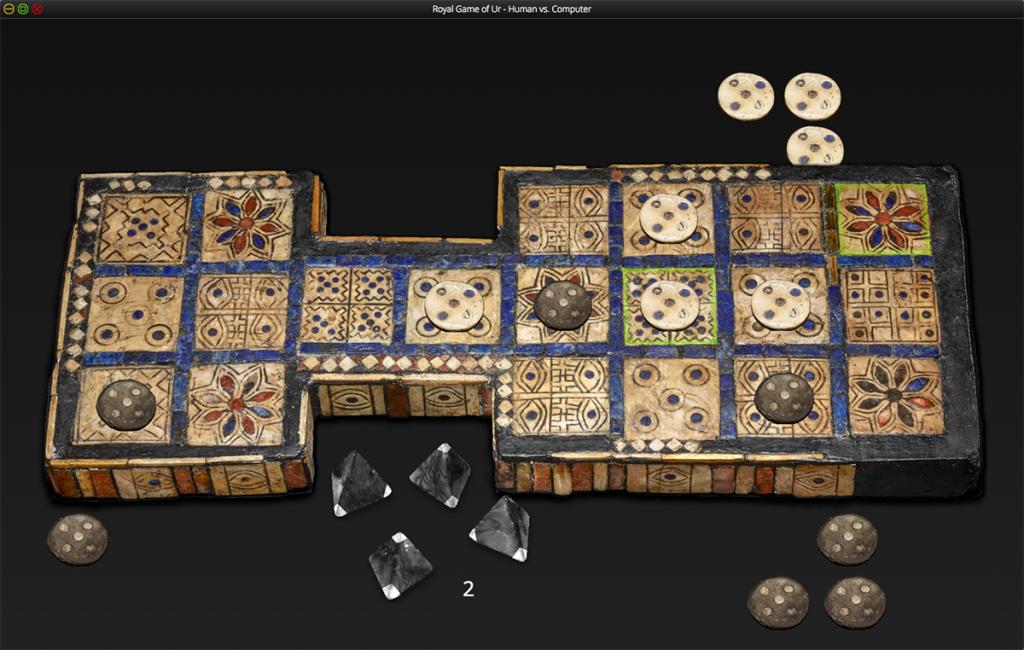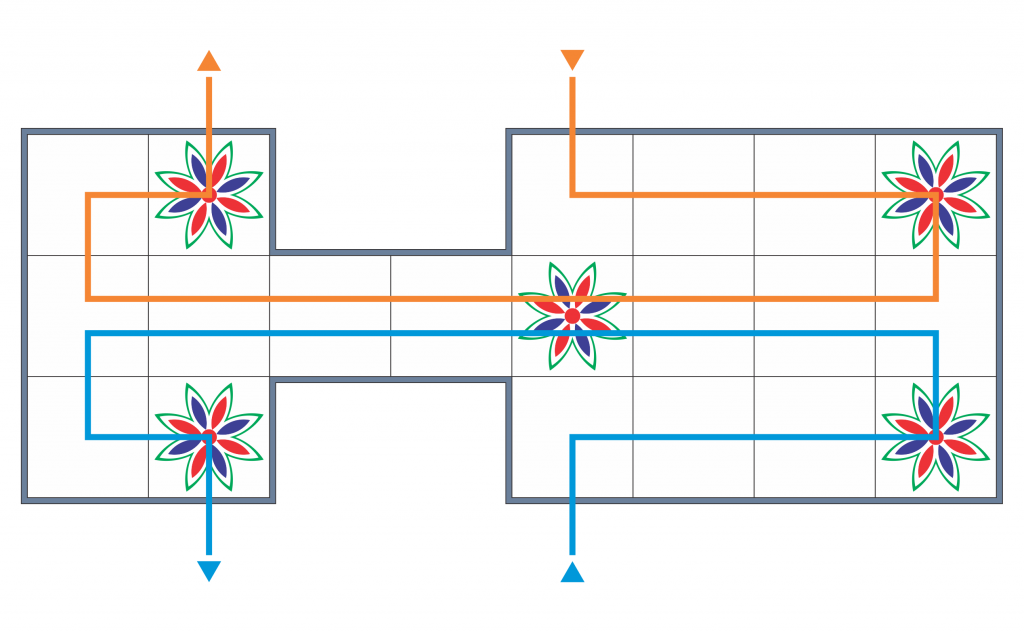
The Royal Game of Ur is an ancient game, probably an ancestor of backgammon. It was played from -2600 BC to the late antiquity. Combining both chance and strategy, it is an exciting game.
GouziGouza uses the rules reconstructed by Dr. Irving Finkel, a curator at the British Museum.
The image used for the board is from the British Museum.
Goal:
To be the first to remove all your pieces after they completed a course on the board.
Gameplay:

The gameboard has 20 squares. Two blocks, one 4 × 3 squares (the long side) and one 2 × 3 squares (the short side), are connected by a narrow bridge (2 squares).
The pieces of each player enter on the long side, then they move on the center row, to finally go out of the board on the short side.
The number of squares you can move is determined by the throw of four four-sided dices. Each pyramidal dice has two corners marked in white. To know how many squares you have to move, just add the number of white corners facing upward.
Tip: The most likely throw is 2 (37.5% of all dices throws). 1 or 3 will both appear 25% of times. Finally, your throws will result in a 0 (yes, zero!) or a 4 only 6.5% of times for each of these values.
When you throw a 0, you skip your turn.
You have now to choose between:
- Add a piece to the board if you have pieces waiting to enter the game (a 1 will allow you to put a piece on the first square, a 2 on the second one…), and the landing square is empty.
- Move one of your pieces already on the gameboard by the number of squares indicated by the dices. You cannot land on a square occupied by one of your own pieces. You can land on a square held by your opponent’s pieces (except if the square is the central rosette), the opponent’s piece is removed from the gameboard and is placed in a starting position. You are allowed to land on an empty square.
- Remove a piece from the board. An exact number is required. If your piece is on the last square of your course, it means you have to get a 1 with the dice. If your piece is on the square before the last one, you will need a 2… The first player to remove all his seven pieces wins!
You always have to play if you can, even if it disadvantages you. However, you do not have to capture an opponent piece if you do not wish to, and another move is played. Sometimes, you cannot make a valid move, in that case, you skip your turn. Finally, you cannot split the dices and move more than one piece per throw.
Tip: The six squares closest to you are safe (four on the long side, two on the short side). Your opponent cannot go those squares.
Tip: The eight squares on the middle row are the “combat” squares, where your pieces can be captured (except on the rosette square). You should move quickly to safety.

Five squares on the game board are unique: the “rosette” squares. When you land on a rosette square, you can re-throw the dices and play another time. The central rosette is the only square in the “combat zone” to be safe. If it is occupied, nobody can land on it to capture a piece.
Tip: The rosettes are very important and should be landed on if possible (unless you have a better option).
Tip: The central rosette is great to hinder your opponent’s pieces moves since when you occupy it, he cannot land on it. It is also a great place to be to attack your opponent from behind.